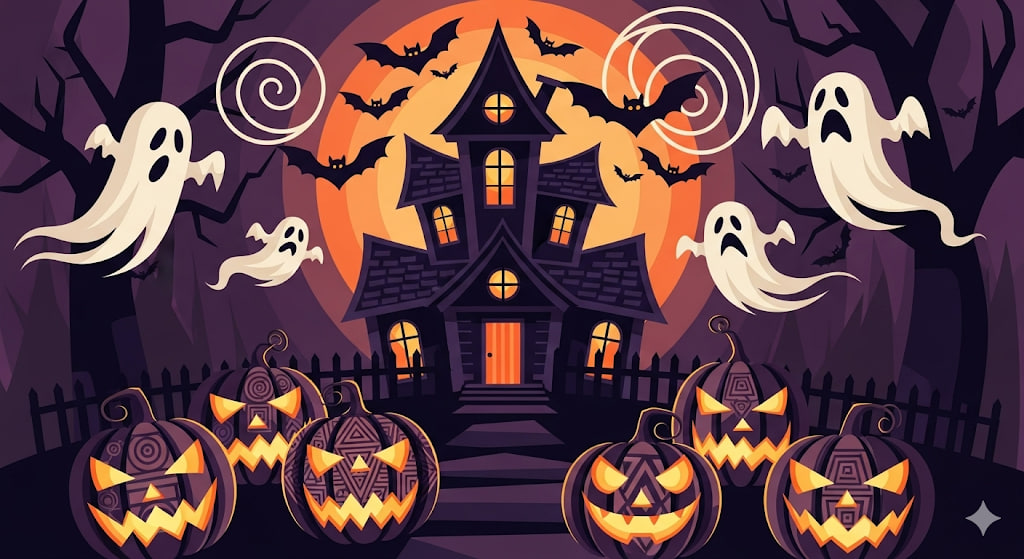Every year on October 31st, people around the world celebrate Halloween by dressing up in costumes, carving jack-o'-lanterns, and, of course, trick-or-treating. But behind the ghosts, ghouls, and candy corn lies a rich and complex history that stretches back thousands of years. From ancient Celtic festivals to the modern traditions we know and love, the history of Halloween is a fascinating journey through time, culture, and folklore. This article delves into the origins of this beloved holiday, exploring how it evolved from a pagan ritual into a global phenomenon.
From Samhain to All Hallows’ Eve: The Ancient Roots
The story of Halloween begins with the Celts, a people who lived 2,000 years ago in the area that is now Ireland, the United Kingdom, and northern France. They celebrated their new year on November 1st with a festival called Samhain (pronounced SOW-in). This date marked the end of summer and the harvest and the beginning of the dark, cold winter, a time of year that was often associated with death.
The Celts believed that on the night before the new year, the boundary between the living and the dead became blurred. It was thought that the ghosts of the dead returned to earth. To ward off these spirits, people would light bonfires and wear costumes, often made from animal skins and heads, to disguise themselves and confuse the spirits. They also left food and drink outside their doors to appease the wandering spirits. This practice is believed to be a precursor to modern-day trick-or-treating.
Roman Influence and Christianization
By 43 A.D., the Roman Empire had conquered most of Celtic territory. Over the next 400 years, two Roman festivals were combined with the traditional Celtic Samhain. One was Feralia, a day in late October when the Romans honored the passing of the dead. The second was a day to honor Pomona, the Roman goddess of fruit and trees. The apple, a symbol of Pomona, likely contributed to the tradition of bobbing for apples.
Later, as Christianity spread, the church sought to replace pagan festivals with Christian-sanctioned holidays. In the 8th century, Pope Gregory III designated November 1st as All Saints’ Day, or All Hallows’ Day, a time to honor saints and martyrs. The night before, October 31st, became known as All Hallows’ Eve. The name "Halloween" is a direct contraction of "All Hallows’ Eve," and it retained many of the traditions of Samhain, including costumes, bonfires, and the belief in spirits.
Halloween Arrives in America
The celebration of Halloween was largely limited in colonial America, due to the rigid Protestant belief systems of the time. However, it was more common in the southern colonies and Maryland, where there was more religious diversity. The real transformation of Halloween began with the massive influx of Irish and Scottish immigrants in the 19th century.
These immigrants brought their Samhain and All Hallows’ Eve customs with them, blending them with American traditions. As a result, new, uniquely American Halloween customs began to emerge. Neighbors would gather for public celebrations, sharing stories of the dead, telling fortunes, and dancing. These gatherings were a mix of traditional European rituals and new American folklore.
The Rise of Trick-or-Treating and Pranks
By the late 19th century, Halloween had evolved into a community-based holiday. Young people, in particular, began to engage in playful mischief and pranks. However, by the 1920s and 1930s, the pranks had become more destructive, leading to concerns about public safety.
To combat this, communities and parents began to organize events for children, encouraging a move away from vandalism. The practice of trick-or-treating—where children went door-to-door for treats—was an ingenious solution. It was a way for communities to channel the festive energy into a safe, family-friendly activity. The phrase "trick-or-treat" was first used in print in the 1920s, and by the 1950s, it had become a widespread American tradition.
The Modern Halloween: A Pop Culture Phenomenon
In the post-World War II era, Halloween shifted from being primarily a community-focused event to a commercial and pop culture staple. Costumes became mass-produced, decorations filled store aisles, and Halloween became the second-largest commercial holiday in the U.S., after Christmas.
Today, Halloween is more popular than ever, with people spending billions of dollars on candy, costumes, and decorations. It has spread globally, with countries around the world adopting and adapting its traditions. The holiday’s ancient roots—dressing up to ward off spirits—are still reflected in our costumes, but the meaning has largely transformed. For most people, Halloween is now about creativity, community, and harmless fun, a chance to be someone or something else for a night.
In conclusion, the history of Halloween Day is a testament to how traditions evolve over time, adapting to new cultures and beliefs. What began as a solemn pagan ritual to honor the dead has become a lighthearted celebration of all things spooky, sweet, and fun. So, as you put on your costume and grab a bucket for candy, remember that you are taking part in a tradition that is thousands of years in the making.



